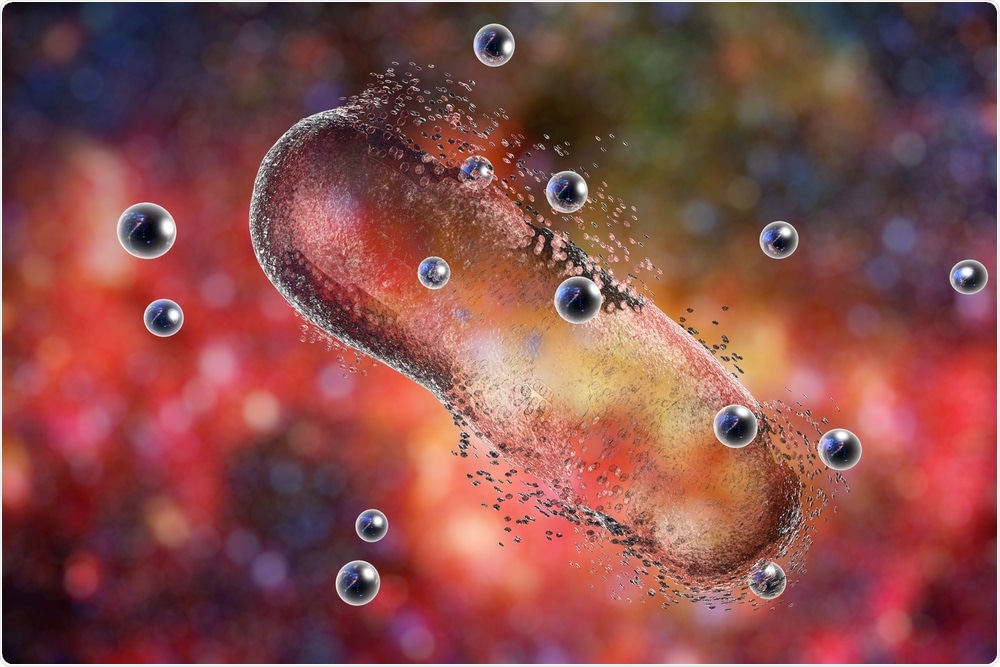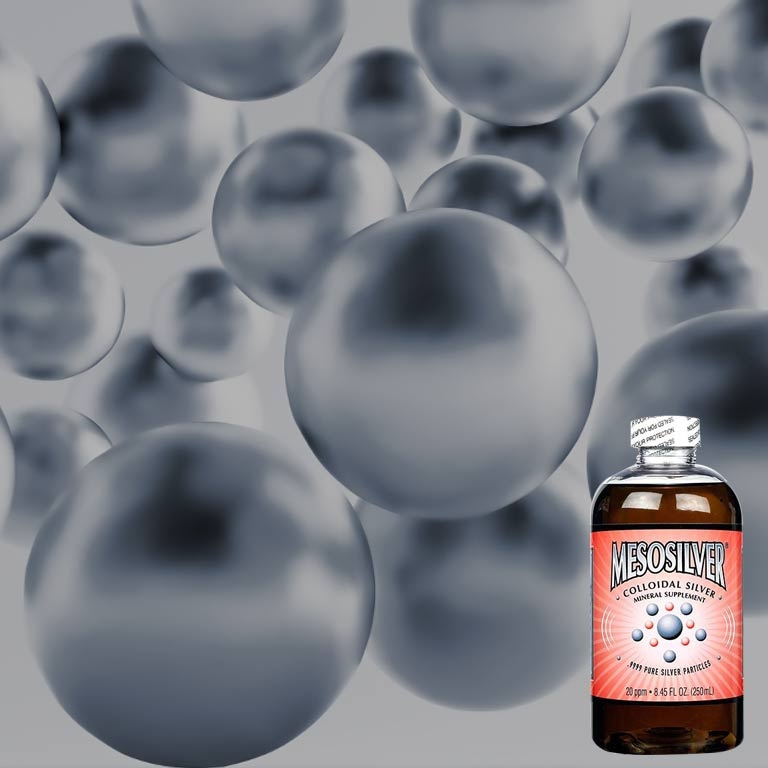An interview with Philip Marshall, Pure Colloids.
About Philip Marshall
Created Cauldron Foods Ltd, one the first significant UK based vegetarian food manufacturing companies in 1980.
Has wide experience in food manufacturing technology and in the development of special purpose automated machinery.
Was instrumental in developing HACCP methodology for the food industry working with CCFRA, His interest now focuses on promotion and development of appropriate technology to minimize human impact on our environment.
Research into the effectiveness of silver as an antimicrobial agent
Formation of a commercial relationship with Purest Colloids INC, lead to the formation of purecolloids.co.uk
What antimicrobial effects have been demonstrated for silver nanoparticles?
Even in antiquity silver was recognised, albeit anecdotally, as having antibacterial properties. Ancient romans used silver vessels, and cutlery was made in silver. In the past silver coins were placed in milk to reduce souring.
In more recent times silver in various forms has been used in bandages to aid healing and prevent infection, as well as a host of other uses such as incorporation into the surfaces of items used in kitchens and hospitals. One research document states that silver is effective against 650 strains of microorganisms. A full list of references would certainly run into several pages, here are a few examples.
- UCLA Medical School 1980s, Larry C. Ford, MD,
- Antibacterial Activity of Nanosilver Ions and Particles. Georgios A. Sotiriou and Sotiris E. Pratsinis Environmental Science & Technology 2010 44 (14), 5649-5654 DOI: 10.1021/es101072s
- J. Am. Chem. Soc.200512772285-2291. Publication Date:January 29, 2005 https://doi.org/10.1021/ja040226s Copyright © 2005 American Chemical Society
- Engineering nanosilver as an antibacterial, biosensor and bioimaging material Georgios A. Sotiriou and Sotiris E. Pratsinis*
How do silver nanoparticles disrupt cell walls to counter bacteria?
This is still a hotly debated subject and more research is required, but some research suggests that it is silver Ag+ ions that have a disruptive effect on the cellular membrane leading to death of the organism.

![]() Image credits: Kateryna Kon | Shutterstock
Image credits: Kateryna Kon | Shutterstock
The problem here lies in ion delivery, as ingested solutions of ionic silver become silver compounds within 7 seconds of ingestion. Silver nanoparticles can travel through the human organism whilst releasing silver ions from their surface.
This process of oxidisation is slower than the direct ionic contact method, but in the cases where free ions such as chloride may be present (blood serum etc), silver nanoparticles are an effective delivery mechanism for silver ions due to their low reactivity potential. Whether antimicrobial property derives from the actual particle or their ion releasing capacity, the result is the same.
- Morones JR, Elechiguerra JL, Camacho A, Holt K, Kouri JB, Ramirez JT, Yacaman MJ. The bactericidal effect of silver nanoparticles. Nanotechnology. 2005; 16:2346–2353. [PubMed:20818017] *First study to systematically investigate the bactericidal properties of nanosilverparticles.
- Sotiriou and Pratsinis Page 6 Curr Opin Chem Eng. Author manuscript; available in PMC 2013 May 30.
What are the advantages and limitations of colloidal silver over ionic silver solutions?
A true colloidal silver of silver NP’s has low reactivity in the human organism, ionic solutions are highly reactive. Silver ions will combine with free chloride ions found in the human organism in about 7 seconds.
Many of the products available on the market today called colloidal silver contain low particle concentration and often of very large particle size, together with a high ionic content. A true colloid containing over 50% particles and of a mean particle size of less than 10Nm is a massively more effective in antimicrobial activity.
Are silver nanoparticles susceptible to antimicrobial resistance? Why?
It may be possible, but unlikely as silver causes affected organisms to die before they can develop resistant mutations. More research is necessary, but there is much potential for the creation of therapeutic cocktails perhaps incorporating silver NP’s with other antimicrobials.
Silver nanoparticles are currently effective against multiple antibiotic resistant bacteria.
- Caio H. N. Barros,† Stephanie Fulaz,† Danijela Stanisic, and Ljubica Tasic Biogenic Nanosilver against Multidrug-Resistant Bacteria (MDRB)
Are silver nanoparticles safe for human consumption? How are silver nanoparticles regulated?
All tests1 carried out by Purest Colloids show that Mesosilver™ is completely safe.
The fact that the FDA allows it to be manufactured in a highly controlled facility, and to be sold to the public, supports this. Whilst there are no specific regulations relating to colloidal silver, manufacturing facilities are rigorously controlled by the FDA as with any food or pharmaceutical related process.

- Bacterial Reverse Mutation Ames Test: HET-CAM, HRIPT, AOTS
What are the differences between colloids of silver metal particles and ionic silver solution?
A colloid is an insoluble substance suspended in another substance. Silver nanoparticles in Mesosilver™ will remain in a colloidal state indefinitely due to particle zeta potential.
In the case of some high concentration large particle colloids, potentially dangerous protein additions are required to prevent agglomeration and precipitation of particles.
Ionic silver solutions are not colloids. The silver ions (silver particles missing one outer orbital electron) can only exist in the solute. Once in contact with free ions or when the water evaporates, insoluble and sometimes undesirable silver compounds will form.
What are the advantages and limitations of colloidal silver over ionic silver solutions?
Whilst they are useful in certain external applications, ionic solutions are limited by their reactive capacity. In many cases the silver compounds formed are non-effective and/or undesirable in high dosage.
True colloids of silver nanoparticles do not suffer from this disadvantage as they do not readily form compounds in the human organism.
How does particle size affect the reaction with silver nanoparticles?
Particle size is crucial when silver nanoparticle reactions are concerned. The capacity of silver nanoparticles to release silver ions (Ag+) occurs only on the particle surface. Therefore, with any given particulate weight, the smaller the particle the greater the total surface area.
In addition, it has been shown that smaller particle sized NP’s demonstrate an enhanced ability to release silver ions. Even in the case where actual particle contact may prove to be the reactive mechanism, surface area is still the dominant factor in determining effectiveness.
What does Pure Colloids offer in the colloids of silver nanoparticles range? What features do these colloids have?
purecolloids.co.uk offers the full range of Mesocolloid™ products manufactured by Purest Colloids INC New Jersey.
Mesosilver™ is unique in its product group, representing the smallest possible true colloidal silver suspension. Mesosilver™ has a particle concentration of 20ppm and a consistent particle size of 0.65 Nm.
This is the smallest and most effective silver colloid available anywhere. Mesosilver™ is available in 250 ml, 500 ml, 1 US gal, and 5 US gal units.
How do the Pure Colloid colloidal silvers compare to other colloidal silver products on the market?
Mesosilver™ is quite simply the best true colloid silver on the market. It represents the most effective product in terms of particle size to concentration, and the best value for money.
Mesosilver™, by virtue of its high particle content (over 80%) and its particle size of 0.65 Nm at 20 ppm, is unmatched by any other manufacturer.
What is the future of colloid silver and Pure Colloids?
Whilst at present Colloidal silver is limited to being marketed as a dietary supplement its potential use in combating pathogenic organisms is significant, particularly in the light of the development of antibiotic resistant bacteria.
In addition, there is massive potential in the research into its use in anti-viral and anti-fungal uses. purecolloids.co.uk is committed to supporting the responsible use of nanoparticle silver in its various applications, and the development of safe use guidelines for colloidal silver products within the currently existing legal framework.
Where can readers find more information?
www.purecolloids.co.uk